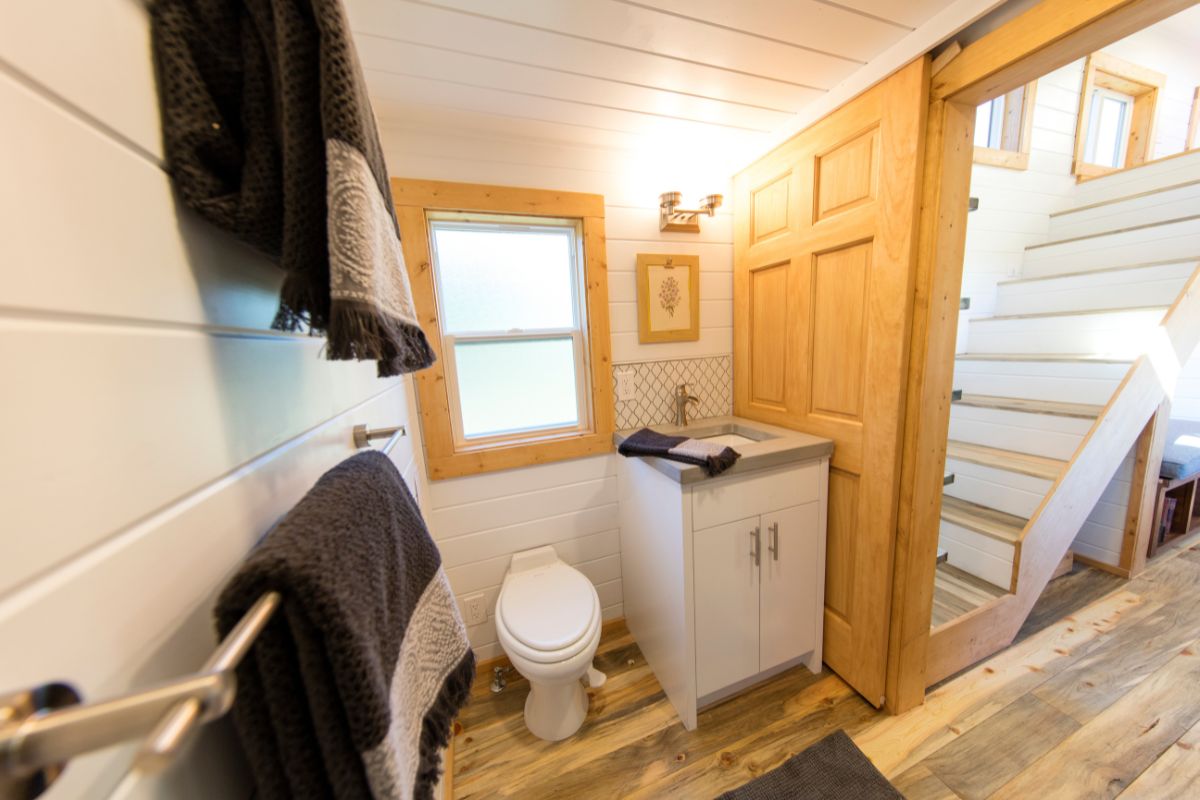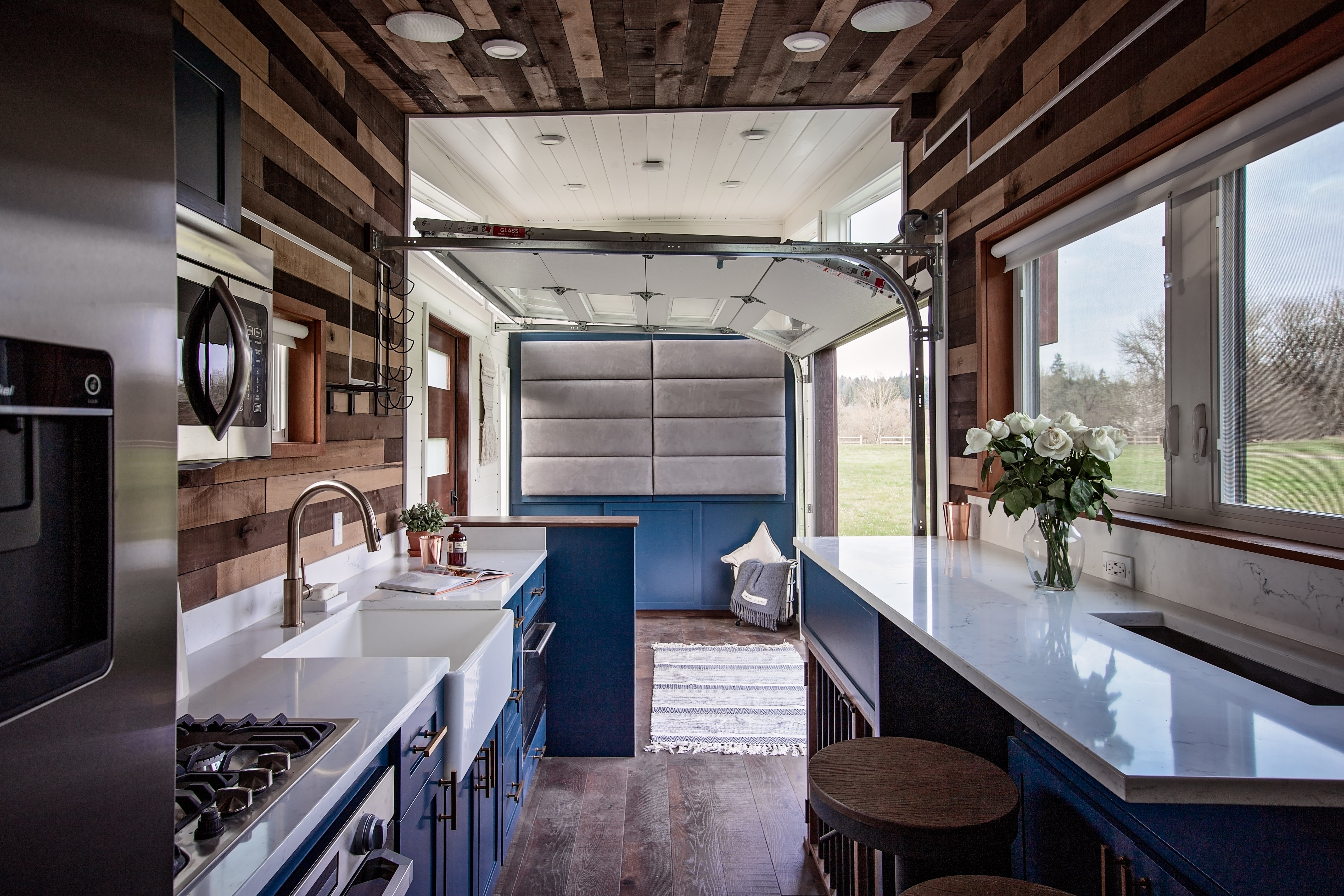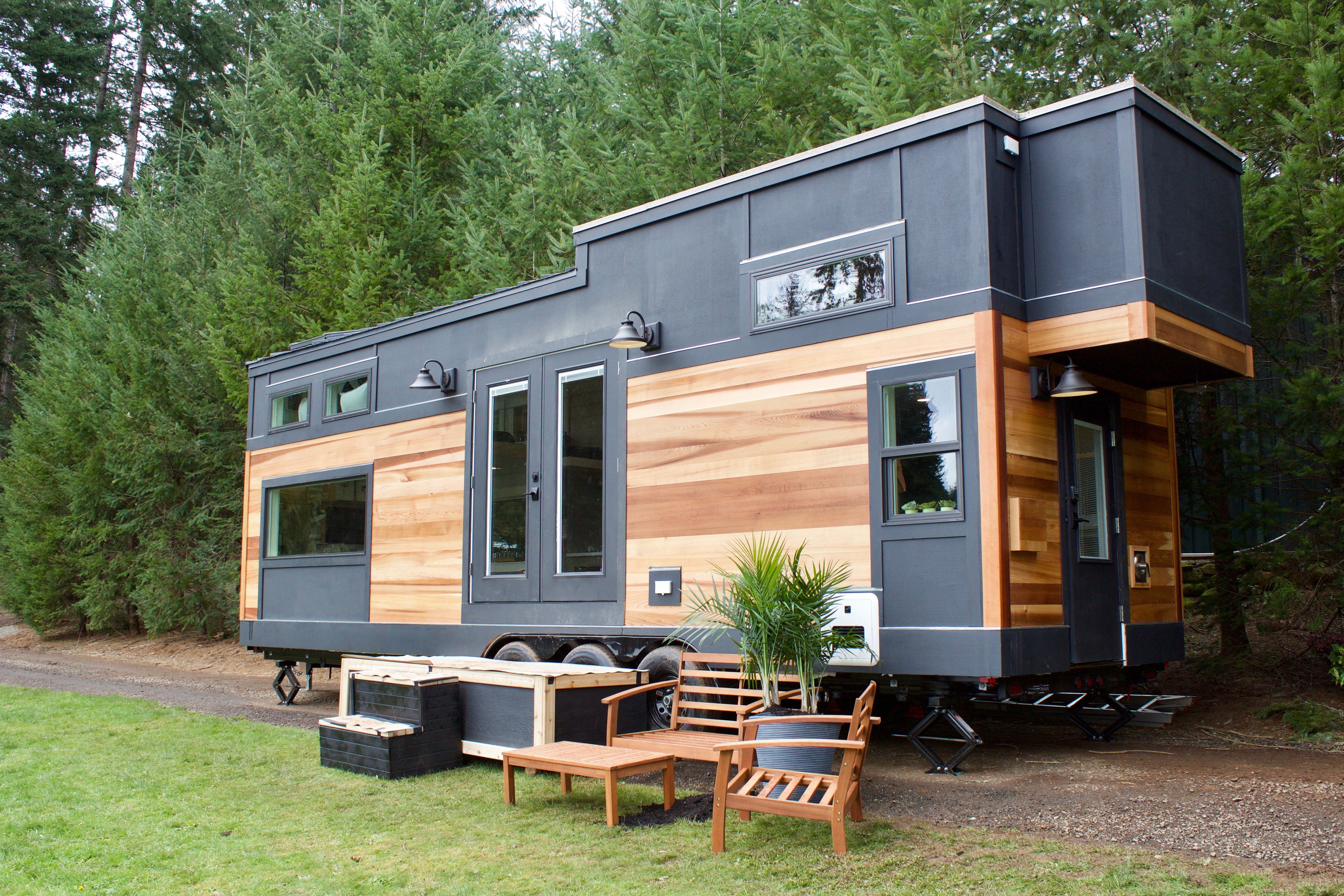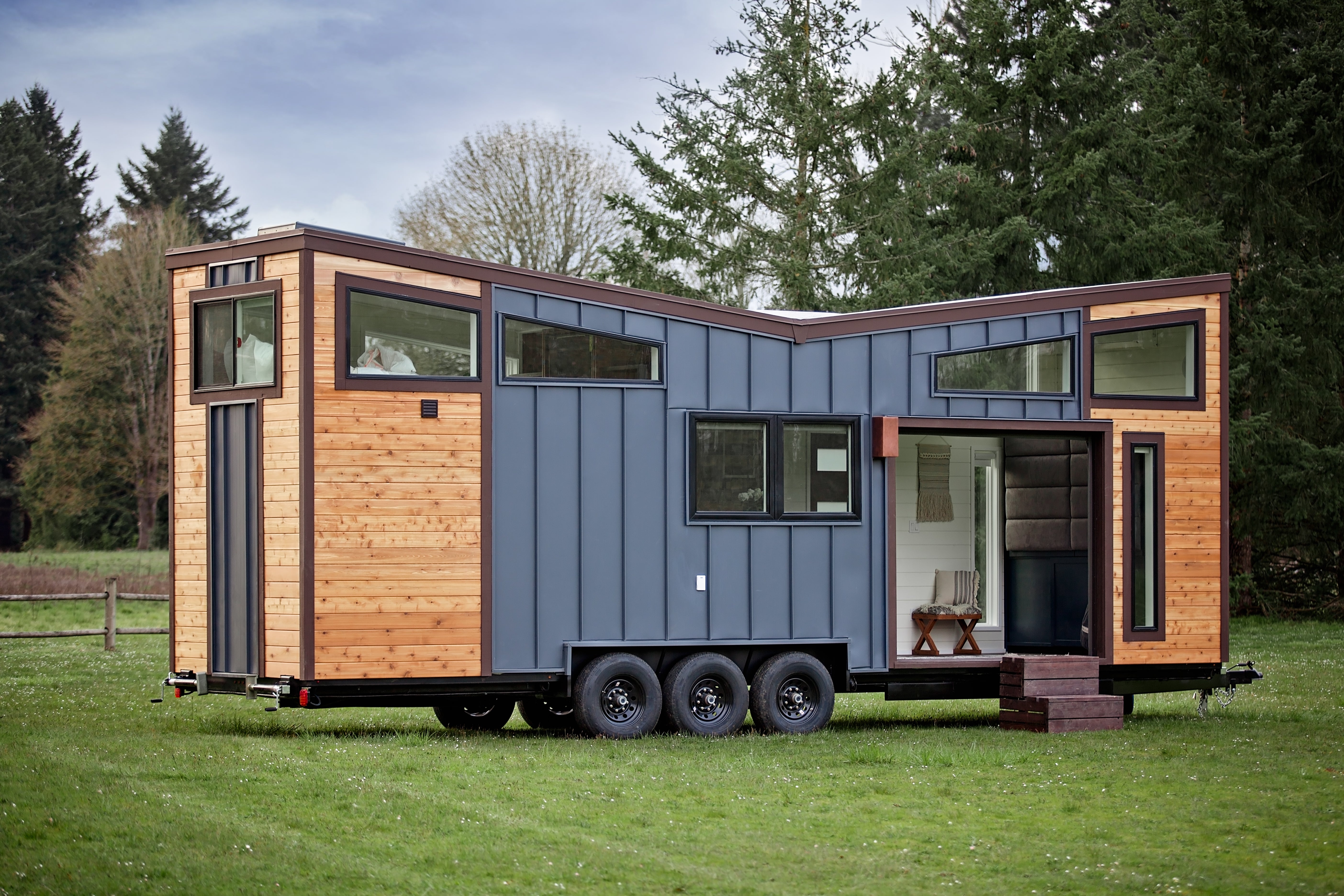A tiny home has a long list of benefits. A small space means you’ll spend less time cleaning and more time living. Construction and maintenance are cheaper. Energy costs can also be lower. But like other houses, building one requires proactive planning. From the layout to materials, furniture to lighting, many factors must be considered. But there’s one you shouldn’t overlook: plumbing.
One wrong connection and you’ll have leaks all over the place. Mold grows and lines are frozen. A plumbing system hides behind walls, but that doesn’t mean you can ignore it.
A common dilemma that confronts many tiny home owners is whether they should take the DIY route or hire a pro. Some small plumbing tasks can be completed yourself. But others are too important to handle on your own. When does hiring a plumber make sense?
Why Plumbing Is Different in Tiny Houses
Every plumbing component fights for space to address room constraints. Scaled-down systems are necessary. PEX tubing replaces rigid copper, making installation a breeze even in tight spaces. Tankless water heaters are preferred for their space efficiency and sustainability in a small house. Even waste management and drain setups require a unique approach.
Standard homes place pipes in walls or basements. Tiny houses lack this buffer. Every pipe run impacts layout and storage. A misplaced valve blocks the cabinets. Wrong tank placement eats up square footage. Access for maintenance and moving parts is limited.
Tasks can become more complex, necessitating the need for professional plumbing services. Experts maximize the plumbing design to suit limited spaces. They know how to design and install effective systems without wasting an inch.
DIY-Friendly Plumbing Tasks
Some plumbing tasks are simple enough to fit DIY skills. Plan carefully and follow basic steps to complete the work successfully. Avoid those that require dealing with complex drainage and waste lines.

Planning Fixture Locations
Map sink, shower, and toilet spots. Align with supply lines and drainage routes. There should be at least ¼ inch per foot slope under floors. Check cabinet clearances and wall access. Good layouts help avoid costly and complicated tear-outs later. Use cardboard templates for better precision.
Running PEX Tubing
PEX tubes bend easily through tight spaces. Cut tubing with a rotary tool to ensure clean edges. Slide crimp rings onto ends. Insert brass fittings and squeeze the rings using a crimper. Test each joint. Those with mobile homes will love how freeze-resistant the tubes are. The material is flexible and forgiving, making it ideal for DIY installation.
Installing Shut-Off Valves
With shut-off valves, you can isolate water flow to individual fixtures and instantly stop water during failures or bursts. You can swap appliances and fixtures with zero downtime. Installation requires basic compression fittings. No soldering is necessary. Testing is visual. You’ll open and close valves and see if there are leaks. And when there are errors, only one part is affected and not the whole build.
Setting Up Drain Traps
These U-shaped pipes are installed below sinks, tubs, and showers. They block sewer gases to prevent toxic methane and hydrogen sulfide from seeping into living spaces. The bend also captures hair, solids, and grease to reduce downstream clogs. The assembly requires only slip joint nuts and washers. It’s accessible and requires no wall demolition.
Connecting Fixtures

Showers, faucets, and similar fixtures are easy to install, especially when plumbing lines are readily available. Replacing them can be a quick DIY task. Refer to the instruction manual for detailed steps. You’ll also find lots of online videos. Leaks are immediate and detectable to quickly know if you did something wrong.
Tasks That Require a Licensed Plumber
Some plumbing jobs are too risky and complicated for a DIY approach. Safety codes and permits may be needed. Advanced tools and materials can be required. In such instances, it’s best to approach a pro. It means paying someone to do the job, but that cost will be worth it given a person’s expertise.
Gas Line Installations
Gas leaks are silent but deadly. Even small concentrations can trigger explosions. Professionals use pressure gauges and leak detectors that homeowners lack. They solder joints that meet international standards to guarantee safe installations. They ensure systems pass regulations. DIY errors can void insurance. That will be costlier to deal with in the future.
Diagnosing Pressure and Leak Issues
Some leaks are quick to spot. They’re highly visible when water runs on the side of the faucet or shower even when the line is shut. Others are more complicated. Professionals inspect hidden blockages and poor line routes. They use thermal cameras, leak detection tools, and pressure gauges. Precision matters. There’s no room for guesswork.
Handling Code and Permit Requirements
Even tiny homes are not spared from following strict building regulations. The laws can differ depending on where you live. Pros will interpret regulations, submit engineered plans, and manage inspections. Taking the DIY route may result in permit denials and rebuild orders. Penalties can reach thousands of dollars.
Installing Backflow and Venting Systems
Faulty backflow devices siphon graywater into drinking lines. Inadequate venting traps methane gas. Experts size air admittance valves, install vacuum breakers, and test air gaps. DIY risks contamination poisoning and explosions. Certified test reports may be required to prove the safety and livability of your tiny home.
Connecting Septic or Sewer Systems
Sewage work requires strict compliance with local health regulations. Plumbers are familiar with setting slope, depths, and access points. They can set pipes for proper volume and pressure-test joints. The right steps protect your system and public water supply. Health hazards demand zero tolerance.

Choosing the Right Plumber
Now that you’re ready to hire a plumber for your small house, take the time to evaluate the possibilities. They aren’t all the same. Some may deliver superior work while others are inferior.
-
License and Insurance: Confirm active state licensure and current liability coverage. It shields you from substandard work or jobsite accidents.
-
Reference Checks: Get in touch with past clients and learn about their real-life experiences. Read online reviews to help you gauge your options. Learn how to decipher genuine from fake reviews.
-
Pricing Clarity: Ask about the price upfront. It’s best to check with at least three plumbers to compare their rates. Demand flat rates compared to hourly prices.
-
Proximity: Start your search with local service providers to save money. Some may charge additional fees for travel expenses if they are far from the location of your tiny home.
-
Warranty: The work should come with a comprehensive warranty, which usually lasts at least one year. This can provide you peace of mind against potential costly problems.
-
Tiny House Experience: Look for someone who has a past experience in working with tiny homes. You can ask the service provider directly if they have one.
Wrapping Up
DIY saves money. It should be limited to easy tasks that don’t require advanced tools or experience. You can handle basic work like the installation of fixtures, PEX tubing, and drain traps.
On the other hand, hiring a plumber is a better for more complex tasks. Installing gas lines and backflows, connecting septic tanks, and handling permits or requirements are best done by the pros.
Make the most of your tiny home. Don’t skimp on plumbing, especially if you’re fully aware that you lack the knowledge and skills. Spending money today to hire an experienced professional can spare you from costly headaches tomorrow.






Share: